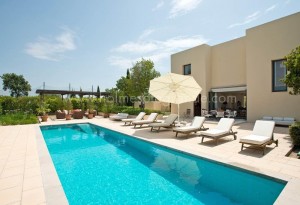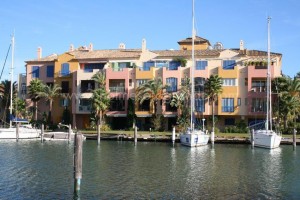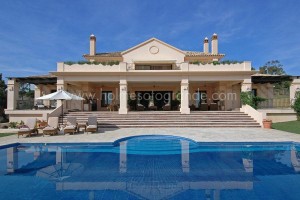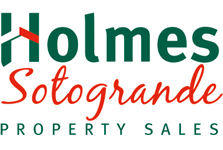 Normally an agency such as ours steers clear of rather salesy-sounding statements such as this, but the fact is, at the moment it is simply true that property here has never been cheaper.
Normally an agency such as ours steers clear of rather salesy-sounding statements such as this, but the fact is, at the moment it is simply true that property here has never been cheaper.
Naturally one has to qualify the statement – and when we say ‘never’ we actually mean for many years. Indeed, the various factors at work at the moment combine to make property cheaper today than it was back in 2000.
Price evolution
We all know that after property prices on the Costa del Sol (and many other parts of the world) peaked around 2007, when after many years of boom they were suddenly seen to be over-inflated as the bubble burst in the wake of the 2008 global financial crisis. The latter had it roots in a variety of causes, but was laid bare by the American sub-prime crisis, or the unravelling of an American mortgage system that had become lax in its lending criteria.
What followed was a gradual decline in prices, which by 2013-2014 had wiped 30-50% off property values in many parts of Spain and its costas. The most desirable properties and areas were shielded from much of this, but if you consider that pre-recession prices were over-inflated by 25% or more, then a drop of 40% corrects that and reduces the real 2007 value by a little over 20%.
Real term prices in today’s money
This puts 2015 property values on the Costa del Sol and Sotogrande at comparable levels to the period of 2000-2002 – which means that in real terms they are considerably lower than then. Correct the figures for inflation and an increase in average income levels of 20-25% since 2000, and the property prices of today are lower than fifteen years ago when measured against real term buying power.
 And this is in spite of the fact that incomes haven’t been growing much since the onset of the recession. These figures apply to people buying from within the Eurozone, but if you come from outside it the picture is different still. For those buying with other hard currencies – the pound, dollar, Swiss francs and the Norwegian and Danish krones – the situation is better yet.
And this is in spite of the fact that incomes haven’t been growing much since the onset of the recession. These figures apply to people buying from within the Eurozone, but if you come from outside it the picture is different still. For those buying with other hard currencies – the pound, dollar, Swiss francs and the Norwegian and Danish krones – the situation is better yet.
The impact of a lower euro
Having previously re-established stability and trust by pegging the euro at roughly 1.15 to 1.25 to the pound, the European Central Bank (ECB) recently ‘let the euro go’, allowing the exchange rate to float up towards 1.40 and bolstering the process through a round of quantitative easing. Both this QE and the lower euro are designed to bolster the Eurozone economy, the latter through greater price competitiveness in the global export markets – but for people outside the currency bloc it means one thing above all: greater buying power when converting their money into euros.
In other words, a British, Scandinavian or Swiss homebuyer on the Costa del Sol will be able to spend at least €100,000 more on a £1 million budget, and as consumers of all kinds have a tendency to nudge up their spending ceiling a little in pursuit of what they seek it is a very welcome margin to play with. Combined with property prices that are already highly attractive and at their lowest real-term levels for many years, it makes this an ideal time to consider buying a home – be it for your own use or purely for medium-term investment returns – in this part of Spain.
Is this all there is to it?
No, actually there is more. Figures in themselves tell only part of the story. To get the full picture you need context, and greater context is provided by knowing which way the market is moving. Attractive prices are all well and good, but if they are expected to drop further people will wait before buying. This is the stagnation of economic activity, consumer spending and business investment that fuels much of the fears surrounding worries about deflation, but while deflation would affect the value of consumer goods and wages it is highly unlikely to lower the property values of prime areas in the Costa del Sol further.
 These have begun to grow slowly again in areas such as Sotogrande, Marbella and Ibiza – driven by strong demand from an upmarket segment that is far more recession-proof and investment-savvy than the mass market. As a result, the initial recovery in the local property market has now become true growth in its own right, with sales rising, new quality-led construction slowly beginning again and prices gradually nudging upwards. Which means that this is not only the cheapest moment in years to buy property here, but also one when the property market is visibly moving upward again and confidence, demand and ultimately prices are growing with it. Quite simply put, it is an ideal moment to buy a property in Sotogrande.
These have begun to grow slowly again in areas such as Sotogrande, Marbella and Ibiza – driven by strong demand from an upmarket segment that is far more recession-proof and investment-savvy than the mass market. As a result, the initial recovery in the local property market has now become true growth in its own right, with sales rising, new quality-led construction slowly beginning again and prices gradually nudging upwards. Which means that this is not only the cheapest moment in years to buy property here, but also one when the property market is visibly moving upward again and confidence, demand and ultimately prices are growing with it. Quite simply put, it is an ideal moment to buy a property in Sotogrande.
Please contact us if you would more information about the market and the properties in the Sotogrande region.
By Jackie Cruz - Manifesto ·
